Video introduction by GM Karsten Müller
Download an Opening Survey for free!
Michal Krasenkow: "A Challenger" (Modern Benoni with 7.Bd3 Bg7 8.h3 ... 9...b5 10.Nxb5)
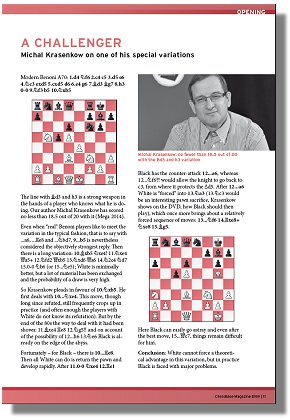 Michal Krasenkow has an excellent performance with the line that he presents in his article: With the line 1.d4 Nf6 2.c4 c5 3.d5 e6 4.Nc3 exd5 5.cxd5 d6 6.e4 g6 7.Bd3 Bg7 8.h3 he scored no fewer selbst einen exzellenten Score vorweisen: 18,5 out of 20!
Michal Krasenkow has an excellent performance with the line that he presents in his article: With the line 1.d4 Nf6 2.c4 c5 3.d5 e6 4.Nc3 exd5 5.cxd5 d6 6.e4 g6 7.Bd3 Bg7 8.h3 he scored no fewer selbst einen exzellenten Score vorweisen: 18,5 out of 20!
After the usual moves 8...0-0 9.Sf3 b5 the Polish GM recommends to take on b5 not with the bishop but with the knight: 10.Nxb5. Here Black must choose between two replies, he plays either 10...Nxe4 or 10...Re8 - both moves were played about 200 times (Mega 2014).
But the first reply looses on the spot! White answers 10...Nxe4 with 11.Bxe4 Re8 12.Ng5!! and due to the threat 12...h6 13.Ne6 black is already on the edge of the abyss.
But Krasenkow also for 10...Re8 shows a forced line where Black can easily go astray, and even after the best movesc, things remain difficult
for him.
Click here to download the pdf file from the booklet...
Download the complete article and open it with your ChessBase or Fritz program...
All Opening Surveys in CBM #159
Schandorff: English A37
1.c4 c5 2.Nc3 Nc6 3.g3 g6 4.Bg2 Bg7 5.Nf3 d6 6.0-0 Bf5
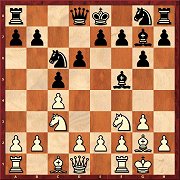
The setup suggested by Lars Schandorff with 6...Bf5 has seldom been seen in practice so far. The intention is ...Dd7 followed up by ...Bh3. The plan is extremely simple, but generally achieves its aim – equality – quite safely.
Moskalenko: Budapest Gambit A52
1.d4 Nf6 2.c4 e5 3.dxe5 Ng4 4.Nf3 Bc5 5.e3 Nc6

Richard Rapport’s spectacular win with Black over Boris Gelfand caused Viktor Moskalenko to put these variations under the microscope. Surprisingly, it is hard to demonstrate an opening advantage for White and in practice Black scores well.
Krasenkow: Benoni A70
1.d4 Nf6 2.c4 c5 3.d5 e6 4.Nc3 exd5 5.cxd5 d6 6.e4 g6 7.Bd3 Bg7 8.h3 0-0 9.Nf3 b5 10.Nxb5
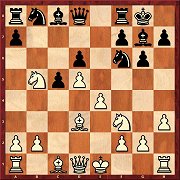
The setup with Bd3 and h3 is extremely dangerous for Black. Michal Krasenkow can, e.g., point to his score of 18.5 out of 20. Theoretically 9...b5 is the correct move, but our Polish author shows that the practical problems after 10.Nxb5 are all Black’s.
Kuzmin: Pirc Defence B07
1.d4 Nf6 2.Nf3 g6 3.Nbd2 Bg7 4.e4 d6 5.Bd3 0-0 6.0-0

Actually with this move order White does not so much want to play the Pirc as simply to avoid the Grünfeld Defence and the King’s Indian. Objectively speaking, Black can equalise, but as Kuzmin shows, in most lines White has a very comfortable game.
Postny: Caro-Kann B12
1.e4 c6 2.d4 d5 3.e5 c5 4.dxc5 Nc6 5.Nf3 Bg4 6.c3 e6
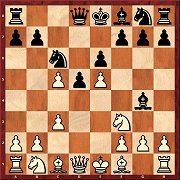
In this variation White absolutely wants to hang on to the c5-pawn, but in return Black may get the e5-one. But White then often gets the bishop pair and a lead in development. According to Evgeny Postny the best way to start is with 7.Be3.
Szabo: Sicilian B81
1.e4 c5 2.Nf3 d6 3.d4 cxd4 4.Nxd4 Nf6 5.Nc3 a6 6.h3 e6 7.g4
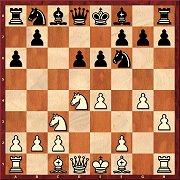
Compared to the Keres Attack, White often loses a tempo here. This makes it easier for Black to equalise, but the positions are very sharp. Krisztian Szabo demonstrates in his article that Black can count on equality both with 7...d5 and with 7...Be7.
Havasi: Sicilian B90
1.e4 c5 2.Nf3 d6 3.d4 cxd4 4.Nxd4 Nf6 5.Nc3 a6 6.Be3 e5 7.Nb3 Be7 8.f3 Be6 9.Qd2 0-0 10.0-0-0 a5
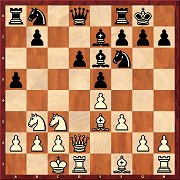
In this variation of the English Attack, 10...a5 is not the main move (that is 10...Nbd7), but Gergö Havasi has had good practical experience with the move of the rook’s pawn. In his article the young Hungarian explains ideas, motifs and typical patterns.
Marin: French C16
1.e4 e6 2.d4 d5 3.Nc3 Bb4 4.e5 b6
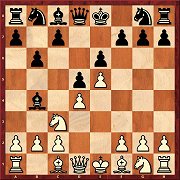
Instead of knowledge of variations, what one needs to have in this very strategic system is an understanding of the plans for both players. Mihail Marin shows you how things are. There are 22 annotated games, many of which have extensive comments.
Breutigam: King's Gambit C33
1.e4 e5 2.f4 exf4 3.Bc4
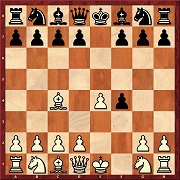
In the second part of his repertoire for Black against the King’s Gambit Martin Breutigam deals above all with 3.Bc4. His recommendation is 3...Nf6. He also examines the weaker alternatives on move 3.
Antic: Bogoindian E11
1.d4 Nf6 2.c4 e6 3.Nf3 Bb4+ 4.Bd2 a5 5.a3
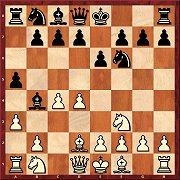
Who is actually favoured by the insertion of the moves 4...a5 5.a3? In any case Black should reply 5...Bxd2+ and a comparison with the 4...Bxd2+ variation comes to mind. Dejan Antic has a few interesting ideas.
Skembris: ^Queen's Indian E12
1.d4 Nf6 2.c4 e6 3.Nf3 b6 4.Bf4
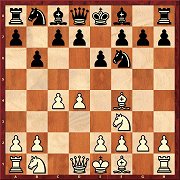
No other top player make have included the Miles Variation 4.Bf4 in his repertoire, but Spyridon Skembris, who has played the variation with both colours, is nevertheless surprised that there is no simple route to equality for Black.
Stohl: Queen's Indian E15
1.d4 Nf6 2.c4 e6 3.Nf3 b6 4.g3 Ba6 5.b3 Bb4+ 6.Bd2 Be7 7.Nc3

The Queen’s Indian with 5.b3 is the main variation is this opening. The subsequent sequence of moves has crystallised out as the best in several games between Aronian and Karjakin. Igor Stohl brings you right up to date.
Gutman: Nimzoindian E25
1.d4 Nf6 2.c4 e6 3.Nc3 Bb4 4.f3 d5 5.a3 Bxc3+ 6.bxc3 c5 7.cxd5 Nxd5 8.dxc5 Qa5 9.e4 Nf6 10.Be3 0-0
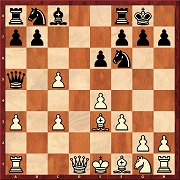
Carlsen may have preferred 7...exd5 in his WCh match, but the alternative 7...Nxd5 is considered to be the main continuation. Lev Gutman has investigated the important variation with 9...Nf6 and can see a slight advantage for White.


 Michal Krasenkow has an excellent performance with the line that he presents in his article: With the line 1.d4 Nf6 2.c4 c5 3.d5 e6 4.Nc3 exd5 5.cxd5 d6 6.e4 g6 7.Bd3 Bg7 8.h3 he scored no fewer selbst einen exzellenten Score vorweisen: 18,5 out of 20!
Michal Krasenkow has an excellent performance with the line that he presents in his article: With the line 1.d4 Nf6 2.c4 c5 3.d5 e6 4.Nc3 exd5 5.cxd5 d6 6.e4 g6 7.Bd3 Bg7 8.h3 he scored no fewer selbst einen exzellenten Score vorweisen: 18,5 out of 20!











